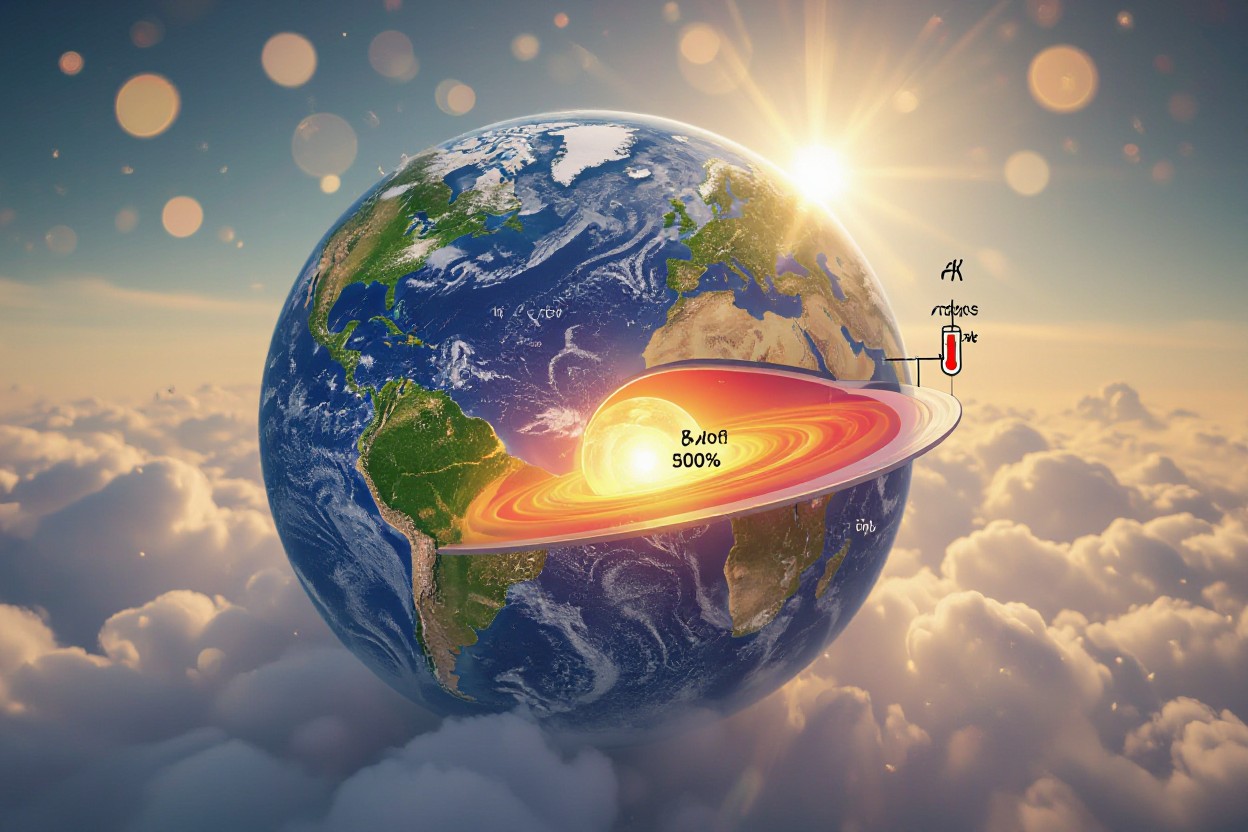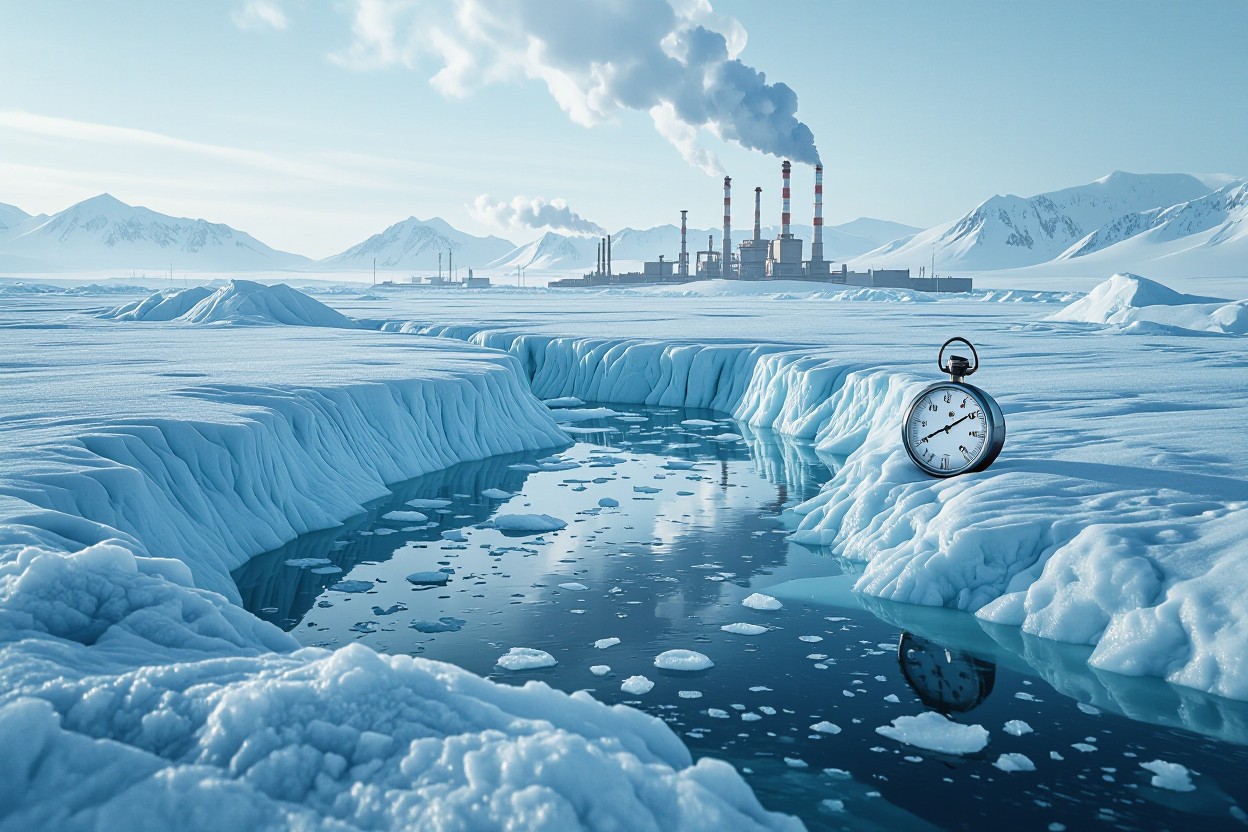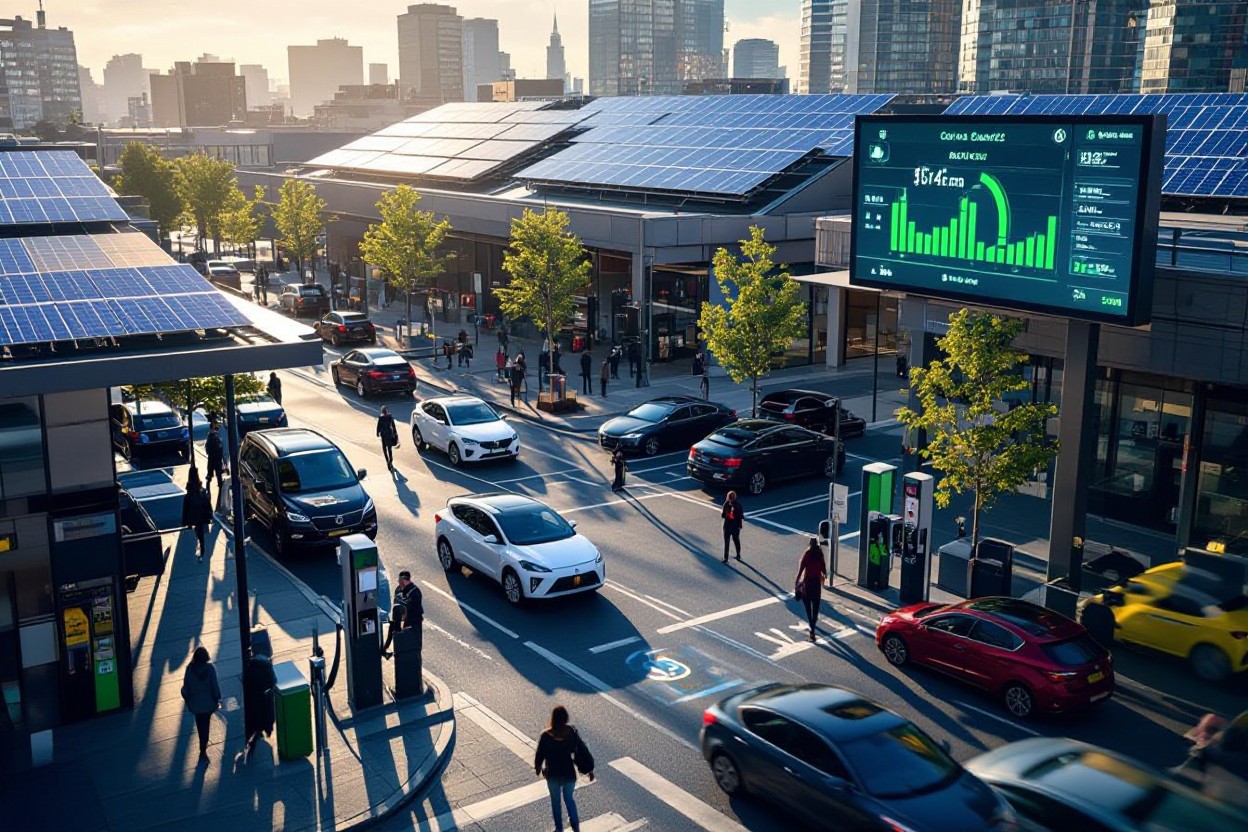Many of you may wonder how our planet maintains temperatures that sustain life. I explore the complex interplay of gases like carbon dioxide and methane that trap heat in Earth’s atmosphere, a natural process vital for your survival. However, I must also share that human activities have intensified this effect, leading to dangerous global warming and climate disruptions. By grasping the science behind this, you can better appreciate Earth’s delicate balance and the urgent need to protect it for future generations.

The Fundamental Science of Greenhouse Gases
Greenhouse gases operate by trapping infrared radiation emitted by Earth’s surface, creating a natural blanket that keeps the planet warm enough to support life. Molecules such as carbon dioxide, methane, and water vapor absorb specific wavelengths of this radiation, re-emitting heat back towards the surface. This process isn’t uniform; it varies with molecular structure and atmospheric concentration. I find that understanding the molecular energy transitions provides insight into why even small increases in these gases can amplify warming substantially, altering climate systems that have remained relatively stable for millennia.
The Role of Carbon Dioxide and Methane
Carbon dioxide and methane represent the most influential agents in anthropogenic greenhouse warming. CO2 accounts for nearly 76% of human-induced emissions, primarily from fossil fuel combustion, while methane, though less abundant, is over 25 times more effective at trapping heat in the first 100 years. You might be surprised that methane emissions stem not just from agriculture but also from thawing permafrost, releasing a feedback loop that intensifies global warming beyond current projections.
The Mechanism of Heat Absorption and Radiation
Greenhouse gas molecules absorb infrared radiation by exciting their vibrational modes, effectively converting photon energy into internal molecular motion. These energized molecules then radiate infrared energy in all directions, including back towards Earth’s surface, preventing heat from escaping freely into space. This radiative transfer forms the backbone of the greenhouse effect, governing Earth’s energy budget and temperature equilibrium with remarkable precision.
Diving deeper, the quantum mechanics underlying this process reveal that each greenhouse gas has distinct absorption bands linked to molecular vibrations and rotations. Carbon dioxide, for instance, strongly absorbs infrared at wavelengths around 15 micrometers, while methane targets slightly different bands near 7.7 micrometers. The atmosphere’s temperature gradient and altitude-dependent concentration of these gases further modulate how much infrared radiation is re-emitted downward versus escaping to space. This subtle interplay shapes the complex thermal structure of the atmosphere, which models strive to replicate accurately to predict future climate scenarios.

Historical Context: Climate Change Through the Ages
Earth’s climate has always experienced fluctuations, driven by complex interactions among atmospheric gases, solar radiation, and geological activities. Over millions of years, ice ages cycled with warmer interglacial periods, shaped by orbital changes known as Milankovitch cycles. These natural variations demonstrate the planet’s sensitivity to changes in greenhouse gas concentrations, which have historically ranged from less than 200 ppm to over 7,000 ppm in ancient atmospheres. Understanding these ancient patterns helps us place today’s rapid warming in a broader temporal framework.
The Natural Greenhouse Effect vs. Anthropogenic Changes
The natural greenhouse effect balances Earth’s temperature, keeping it habitable by trapping about 33°C of warmth via gases like water vapor and CO₂. However, since the Industrial Revolution, human activities—notably fossil fuel burning and deforestation—have increased atmospheric CO₂ levels from 280 ppm to over 420 ppm. This enhanced greenhouse effect accelerates warming beyond natural baselines. The challenge lies in disentangling these anthropogenic influences from natural variability, as human-driven changes now dominate the recent climate signal.
Major Climate Events and Their Implications
Historic events such as the Paleocene-Eocene Thermal Maximum (PETM) around 56 million years ago, which saw temperatures spike by ~5-8°C, reveal how rapid greenhouse gas release can disrupt ecosystems and ocean chemistry. The Younger Dryas event, a sudden cooling 12,900 years ago, illustrates how abrupt shifts can occur, influenced by both natural feedbacks and greenhouse gas fluctuations. These episodes offer sobering parallels to modern climate trajectories amplified by human emissions.
Delving deeper, the PETM’s massive carbon injection into the atmosphere caused widespread ocean acidification and significant species extinctions, signaling the profound biological consequences of rapid warming. Likewise, the Younger Dryas pause in warming stemmed from disruptions to ocean circulation and greenhouse gas feedbacks, indicating that even subtle disturbances in Earth’s systems can trigger large-scale climate events. The implications are stark: as humans continue releasing CO₂ and methane at unprecedented rates, we risk unleashing similarly abrupt and severe climate shifts with cascading ecological impacts.
The Economics of Emission: Costs of Inaction
Ignoring greenhouse gas emissions has deep economic ramifications that extend far beyond environmental damage. Delayed action amplifies disaster recovery expenditures, strains healthcare systems due to climate-related illnesses, and disrupts global supply chains. The cost of inaction, according to a 2022 IMF report, could escalate to over $100 trillion globally by 2100, a staggering figure that dwarfs investments needed for mitigation. The economic inertia of failing to curb emissions today profoundly burdens future generations, making financial foresight as vital as environmental responsibility.
Analyzing the Financial Impact of Climate Change
Climate change intensifies extreme weather events, driving up insurance claims and repair costs; for instance, annual losses from natural disasters have tripled since the 1980s, reaching $240 billion in 2023. Agricultural yields also suffer, with droughts reducing staple crops by as much as 30% in vulnerable regions, threatening food security and boosting prices. These financial stresses ripple through economies, disproportionately affecting low-income communities and increasing global inequality—a clear indicator that climate economics is inseparable from social justice.
The Cost-Benefit of Green Technologies and Practices
Investment in renewable energy and efficiency technologies costs approximately 13% less over their lifespans compared to fossil fuels, factoring in health and environmental savings. Countries like Denmark, which sourced nearly 50% of electricity from wind in 2023, enjoy reduced energy prices and job creation in clean tech sectors. While upfront expenses can deter adoption, the long-term economic returns and resilience benefits create a compelling fiscal case for green transition, rewarding early adopters through sustainable growth and reduced exposure to volatile fossil fuel markets.
Beyond direct energy savings, green technologies unlock innovation across industries. Electric vehicles, with declining battery costs—now about $120 per kWh—offer substantial operational cost advantages over combustion engines. Smart grids and energy storage stabilize supply, prevent outages, and cut peak demand expenses. Additionally, sustainable agricultural practices improve soil health and reduce fertilizer dependency, lowering costs and carbon footprints simultaneously. This multi-dimensional value proposition highlights how embracing green tech is less a financial sacrifice and more a strategic investment that aligns economic and ecological goals.
Policy Responses and Global Initiatives
Governments and organizations worldwide are aggressively addressing the greenhouse effect through coordinated policies and initiatives. Collaborative efforts prioritize reducing greenhouse gas emissions, investing in renewable energy, and enhancing climate resilience. Actions range from international diplomacy to local legislation, reflecting the urgency and complexity of mitigating human-induced climate change. These responses demonstrate a growing recognition that safeguarding Earth’s climate requires systemic shifts in energy consumption, industrial production, and environmental stewardship.
International Agreements: Paris Accord and Beyond
The Paris Agreement represents a landmark pact where nearly 200 countries committed to limiting global warming to below 2°C, ideally aiming for 1.5°C. It mandates national targets for emission reductions, transparent reporting, and financial support for developing nations. Post-Paris, initiatives like the Glasgow Climate Pact emphasize accelerated action and enhanced ambition, reflecting a dynamic, evolving framework designed to hold nations accountable while fostering collaboration on clean technology and climate finance.
National Strategies for Mitigating Climate Change
Countries vary widely in their approaches, with strategies that include carbon pricing, renewable energy subsidies, reforestation projects, and regulations on industrial emissions. China leads with an aggressive investment in solar and wind power, targeting carbon neutrality by 2060, while the EU has legislated the European Green Deal to achieve net-zero emissions by 2050. In the United States, the Inflation Reduction Act allocates a historic $369 billion toward clean energy and climate resilience measures through 2031.
Diving deeper, national plans often blend market-based mechanisms, such as carbon taxes or cap-and-trade systems, with direct government interventions in infrastructure and innovation. The German Energiewende, for instance, combines phasing out nuclear and coal with ramping up renewables, despite challenges like energy security. Meanwhile, India focuses on expanding solar energy capacity and electrification while managing development needs. Such tailored strategies reflect economic realities and resource availability, but all converge on the imperative of emission reductions aligned with global commitments.

Rethinking Our Collective Role: Individual and Community Action
Individual behaviors, when replicated across millions, significantly amplify greenhouse gas emissions. From energy consumption to transportation choices, each act contributes to the broader climate puzzle. Communities that harness this understanding often catalyze change far beyond personal efforts, transforming local policies and lifestyles to reduce their carbon footprint. Both spheres—personal and collective—intertwine, forming the grassroots foundation necessary to diminish the accelerating trends in global warming.
How Personal Choices Contribute to the Greenhouse Effect
Your daily decisions—such as driving a gas-powered car, consuming meat, or using non-renewable energy—trigger chains of carbon emissions. For instance, shifting to a plant-based diet can reduce your carbon output by up to 50%. Choosing renewable energy sources and minimizing waste further limits greenhouse gases. Small changes, multiplied by billions of people, have the potential to curb atmospheric CO₂ increases markedly.
Building Sustainable Communities: Grassroots Movements
Grassroots movements emerge as powerful engines for sustainable change by encouraging community-wide initiatives that lower greenhouse gas emissions. These efforts often include urban gardens, carpool networks, local clean energy cooperatives, and policy advocacy. Communities like Freiburg, Germany, exemplify how focused civic engagement can transform a city into a model of environmental responsibility.
Expanding on the impact of grassroots movements, consider how Freiburg’s solar energy program supplies over 10% of the city’s electricity, demonstrating the feasibility of renewable integration on a community scale. Their bike-friendly infrastructure and strict building codes reduced emissions by over 40% since 1990. Such examples showcase how community commitment fosters innovation and leads to measurable climate benefits, creating replicable models worldwide that directly challenge the.Status quo.
Conclusion
On the whole, I find the greenhouse effect fascinating as it fundamentally explains how our planet maintains temperatures supportive of life. When you grasp how greenhouse gases trap heat in Earth’s atmosphere, you get a clearer picture of the delicate balance sustaining our climate. I urge you to consider that this warming mechanism, while natural, is being amplified by human activities, altering the system in ways we must understand and address. Your awareness of these scientific principles is key to appreciating the challenges and opportunities ahead in managing Earth’s future climate.





Leave a comment